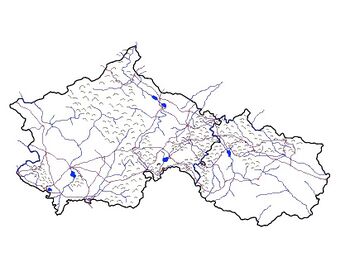Geography of Blechingia: Difference between revisions
Jump to navigation
Jump to search
No edit summary |
No edit summary |
||
| Line 28: | Line 28: | ||
| climate = Diverse: Ranges from Tagia in the south most along the coast. To Temperate | | climate = Diverse: Ranges from Tagia in the south most along the coast. To Temperate | ||
| terrain = | | terrain = | ||
| natural resources = | | natural resources = coal, copper, lead, molybdenum, phosphates, rare earth elements, uranium, bauxite, gold, iron, mercury, nickel, potash, silver, tungsten, zinc, petroleum, natural gas, timber, arable land | ||
| natural hazards = tsunamis; volcanoes; earthquake activity around [[Ice Sea]], forest fires, permafost in southern Étaín | | natural hazards = tsunamis; volcanoes; earthquake activity around [[Ice Sea]], forest fires, permafost in southern Étaín | ||
| environmental issues = | | environmental issues = | ||
}} | }} | ||
Revision as of 17:35, 7 March 2021
 | |
| Continent | Thrismari |
|---|---|
| Area | |
| • Total | 1,022,058 km2 (394,619 sq mi) |
| Borders | Lyonheimer, Medovia, South Eisennau |
| Highest point | Mt. Adian 4,838.4 m (15,874 ft) |
| Lowest point | Slob Theas -2 m (-6.5 ft) |
| Longest river | River McKenna |
| Largest lake | Heilagulvath |
| Climate | Diverse: Ranges from Tagia in the south most along the coast. To Temperate |
| Natural Resources | coal, copper, lead, molybdenum, phosphates, rare earth elements, uranium, bauxite, gold, iron, mercury, nickel, potash, silver, tungsten, zinc, petroleum, natural gas, timber, arable land |
| Natural Hazards | tsunamis; volcanoes; earthquake activity around Ice Sea, forest fires, permafost in southern Étaín |